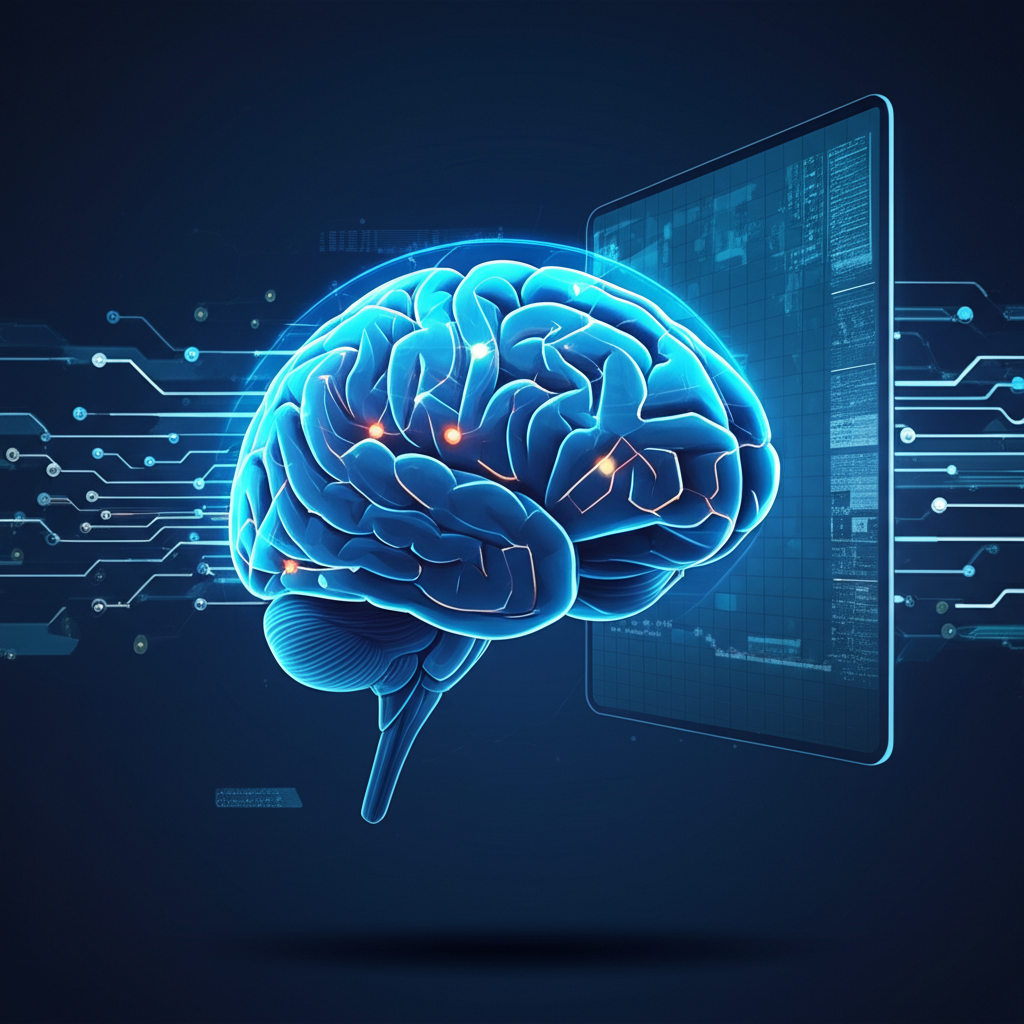
The human brain, a marvel of biological engineering, generates electrical signals that orchestrate every thought, movement, and sensation. For centuries, the dream of directly interfacing with this intricate network remained in the realm of science fiction. Today, however, that dream is rapidly becoming a reality, as evidenced by the recent news of Neuralink’s first patient sharing his journey 18 months after receiving a brain chip implant. This groundbreaking development isn’t just a medical breakthrough; it’s a testament to the power of interdisciplinary STEM innovation, opening new frontiers in neuroscience, engineering, and computer science. For students aspiring to shape the future, understanding the principles behind Brain-Computer Interfaces (BCIs) offers a fascinating glimpse into a world where thought can directly control technology.
Main Technology Explanation
At its core, a Brain-Computer Interface (BCI) is a system that translates brain activity into commands for an external device, bypassing the body’s natural neuromuscular pathways. The journey of Neuralink’s first patient, Noland Arbaugh, highlights the potential of invasive BCIs, which involve surgically implanting electrodes directly into the brain. While non-invasive methods like electroencephalography (EEG), which measures electrical activity from the scalp, have existed for decades, invasive BCIs offer significantly higher resolution and signal quality, allowing for more precise control.
How BCIs Work: A Multi-Step Process
- Signal Acquisition: The process begins with neural recording. Neurons, the fundamental units of the brain, communicate through electrical impulses called action potentials. When we think about moving an arm, for instance, specific populations of neurons in the motor cortex fire in characteristic patterns. Invasive BCIs use arrays of tiny electrodes, often thinner than a human hair, to detect these minute electrical signals. These electrodes are strategically placed in brain regions associated with the desired function, such as the motor cortex for movement control.
- Signal Amplification and Digitization: The raw electrical signals from the brain are incredibly weak, often in the microvolt range. They must be amplified significantly to be detectable and then digitized (converted from analog to digital format) so that a computer can process them. This step involves sophisticated analog-to-digital converters (ADCs) and low-noise amplifiers, critical components designed by electrical engineers.
- Signal Processing: Once digitized, the brain signals are a complex mix of neural activity and noise. Digital signal processing (DSP) techniques are employed to filter out artifacts (like muscle movements or electrical interference) and extract meaningful features. This often involves algorithms that identify specific frequency bands or spike patterns associated with particular intentions. For example, a machine learning algorithm might be trained to recognize the unique neural signature of “move cursor left” versus “move cursor right.”
- Feature Extraction and Decoding: This is where machine learning and artificial intelligence (AI) play a crucial role. Algorithms are trained on vast datasets of brain activity correlated with specific actions or thoughts. They learn to identify patterns (features) in the processed signals that represent the user’s intent. This decoding process translates raw neural data into actionable commands, such as “move mouse cursor,” “select item,” or “type a letter.” The precision and speed of this decoding are paramount for effective BCI operation.
- Output and Feedback: The decoded commands are then sent to an external device, such as a computer cursor, a robotic prosthetic, or a communication aid. Crucially, BCIs also incorporate feedback mechanisms. The user needs to see or feel the result of their brain command to learn and refine their control. This closed-loop system allows for continuous adaptation and improvement in BCI performance.
Engineering Challenges and Scientific Principles
Developing BCIs involves overcoming immense challenges across multiple STEM disciplines. Biomedical engineers design biocompatible materials for implants that won’t be rejected by the body and can withstand the harsh environment of the brain for extended periods. Electrical engineers focus on miniaturizing circuitry, optimizing power consumption for wireless transmission, and ensuring robust signal integrity. Computer scientists and data scientists develop the complex algorithms for real-time signal processing, noise reduction, and intelligent decoding of neural data. Neuroscientists provide the fundamental understanding of brain function, mapping neural pathways and identifying target areas for electrode placement. The principles of electrophysiology, materials science, wireless communication, and advanced computing converge to make BCIs a reality.
Educational Applications
The development and deployment of BCIs like Neuralink’s offer profound educational applications, particularly in revolutionizing assistive technologies and expanding our understanding of the brain.
Restoring Function and Enhancing Quality of Life
The primary and most immediate application of BCIs is in neurorehabilitation and assistive technology. For individuals with severe motor impairments due to conditions like spinal cord injury, ALS, or stroke, BCIs can restore a degree of independence.
- Communication: Patients with “locked-in syndrome” can use BCIs to type messages or control speech synthesizers purely by thought, providing a vital link to the outside world.
- Mobility: BCIs can control robotic prosthetics, allowing individuals to manipulate objects with their minds, or even operate wheelchairs.
- Environmental Control: Imagine controlling lights, thermostats, or smart home devices just by thinking about it. BCIs can enable this level of autonomy.
Advancing Neuroscience Research
BCIs are not just tools for patients; they are also powerful instruments for scientific discovery. By recording neural activity with unprecedented detail, researchers can:
- Gain deeper insights into how the brain processes information, forms memories, and generates consciousness.
- Study the mechanisms of neurological disorders and develop new therapeutic interventions.
- Map the functional architecture of the brain with greater precision.
Real-World Impact
The journey of Neuralink’s first patient underscores the transformative real-world impact that BCIs are beginning to have. Noland Arbaugh, who is paralyzed, has demonstrated the ability to control a computer cursor and play video games using only his thoughts. This is not merely a novelty; it represents a significant leap in restoring agency and interaction for individuals who have lost these capabilities.
Healthcare and Accessibility
The most immediate impact is on healthcare, offering new hope for millions suffering from neurological conditions. As BCI technology matures, it promises:
- Personalized Medicine: Tailored neuro-interventions based on individual brain activity.
- Enhanced Accessibility: Creating a more inclusive world where physical limitations are less of a barrier to interacting with technology and society.
- New Diagnostic Tools: BCIs could potentially be used to detect early signs of neurological diseases or monitor brain health.
Ethical and Societal Considerations
As with any powerful emerging technology, BCIs raise important ethical and societal questions that students in STEM and humanities must grapple with:
- Privacy and Data Security: Brain data is incredibly sensitive. How will it be protected from misuse or hacking?
- Autonomy and Identity: If technology directly interfaces with our thoughts, what are the implications for personal autonomy and the very definition of self?
- Equity and Access: Will these life-changing technologies be accessible to everyone, or will they exacerbate existing healthcare disparities?
- Human Augmentation: While the current focus is therapeutic, the long-term potential for cognitive enhancement raises complex questions about human capabilities and societal norms.
“The ethical considerations surrounding BCIs are as complex as the technology itself. We must ensure that as we unlock the brain’s potential, we do so responsibly and equitably, prioritizing human well-being and autonomy.”
These questions highlight the need for a multidisciplinary approach, integrating ethical frameworks into technological development from the outset.
Learning Opportunities for Students
The field of Brain-Computer Interfaces is a vibrant frontier for STEM students, offering a wealth of learning opportunities and career paths. It is a quintessential example of how diverse scientific and engineering disciplines converge to solve complex, real-world problems.
Interdisciplinary Exploration
BCIs demand an interdisciplinary mindset. Students interested in this field should cultivate knowledge across:
- Neuroscience and Biology: Understanding brain anatomy, physiology, neural coding, and the mechanisms of neurological disorders. Courses in neurobiology, cognitive science, and anatomy are essential.
- Biomedical Engineering: Designing and developing medical devices, biocompatible materials, surgical techniques, and regulatory compliance. This field bridges engineering with medicine.
- Electrical Engineering: Expertise in circuit design, signal amplification, analog-to-digital conversion, wireless communication, and power management.
- **Computer Science
This article and related media were generated using AI. Content is for educational purposes only. IngeniumSTEM does not endorse any products or viewpoints mentioned. Please verify information independently.
